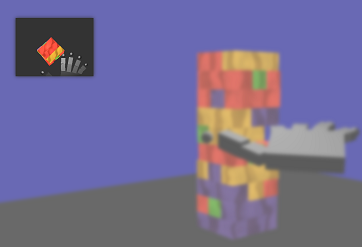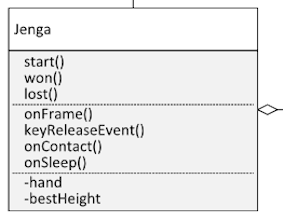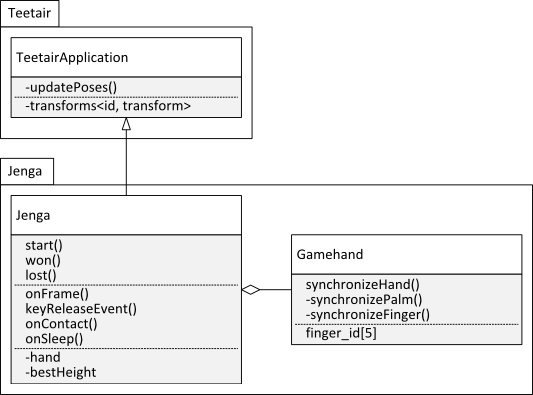Jenga
You start with a tower made of wooden blocks. You can make it higher by taking blocks out of the tower and putting them on top - but the more blocks you take out, the less stable the tower will be. The aim is to build the highest tower possible.
How to play
You play Jenga with your right hand. Every movement of your hand and fingers is synchronized with the hand model in the game. Try now to grab a block, pull it out of the tower and lay it on top of it. You want to change your perspective on the board? Have a look into the camera control.

Top view
When playing Jenga, sometimes it is really hard to determine the distance between your hand and the tower. We added a top view to enable the user to grab and place pieces of the tower more accurately.
Typical Problems
- In the game, my fingers start to jump around and cross, but I haven't even moved my hand!
- Leap Motion can't track the fingers' position and movement accurate enough to steer the skeleton. Sometimes, it loses track of some fingers and it is impossible to reconstruct the actual movement of your hand. Problems especially occur if you tilt your hand too much and some fingers are occluded by others. To reset the tracked fingers keep your hand still with splayed fingers. You will probably need a lot of practice and patience to be able to master this game!
- The menu opens and closes, but I did not perform the corresponding gesture!
- Gesture tracking of Leap Motion is not yet sound, therefore, gestures might not be recognized when they are made or they might be recognized when your current movement didn't intend them at all. Sorry for that - but we won't be able to fix this until the input data delivered by the Leap Motion SDK gets better...
Jenga Architecture
Jenga is responsible for building the tower and maintaining the game state.
Gamehand builds and manages the hand skeleton and tries to synchronize the Leap Motion input with the
skeleton's bones.



